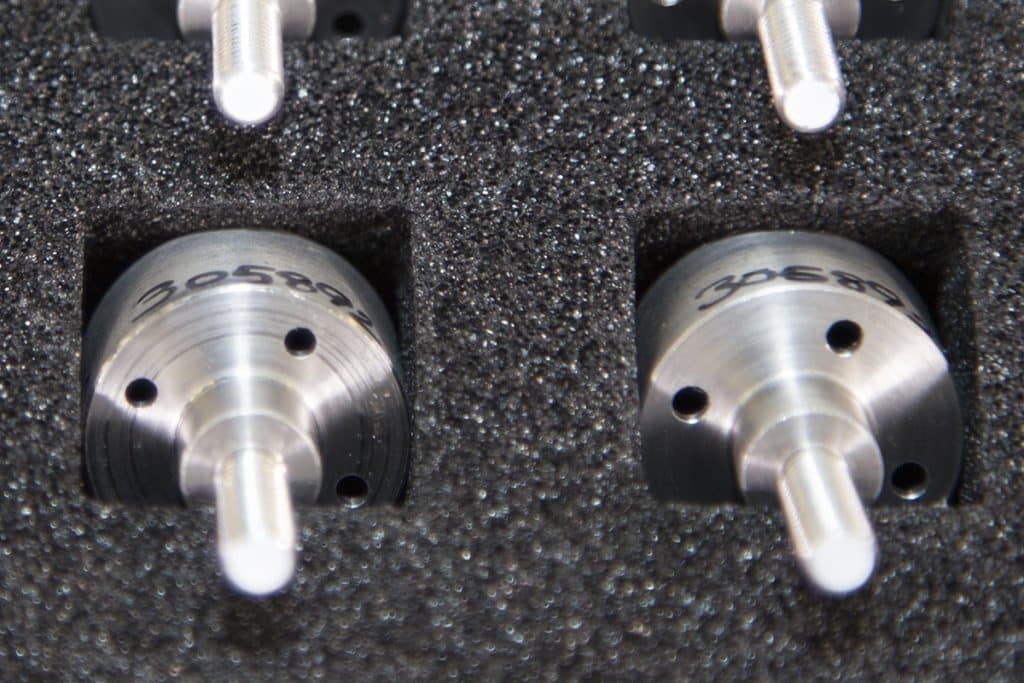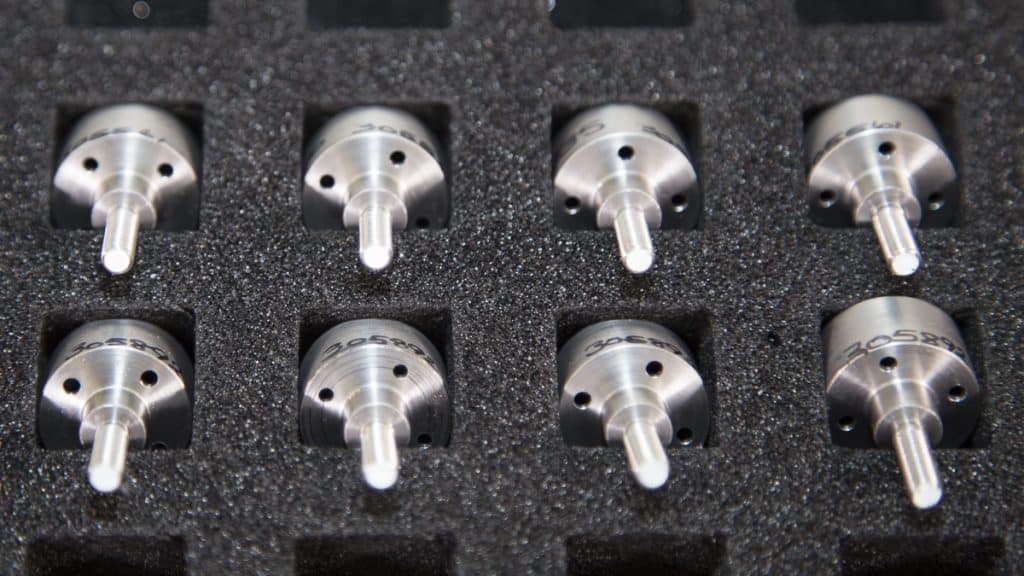Magnetic Coupling Magnet Assembly
By Paul Fears | 13 April 2017
Bunting specialises in the design and manufacture of bespoke and often complex Magnet Assemblies. Such assemblies are supplied to companies across the European manufacturing sector. To explain in greater detail, we examine one specific Magnet Assembly designed for a magnetic coupling.
Design Engineering

The components shown in the photograph are part of a high performance magnetic coupling. A magnetic coupling is a coupling that transfers torque from one shaft by using a magnetic field rather than a physical mechanical connection.
The design is bespoke and undertaken in conjunction with the customer.
The initial design criteria highlighted the need to provide a maximum level of torque from a very small physical envelope. Initial design concepts used a relatively older grade of Neodymium [Iron Boron] Magnet (Rare Earth). However, our design engineers quickly identified that newer high strength grades of Neodymium (N52 instead of N48) would make a significant difference to the performance.
Corrosion Resistance
Another key design criteria was the submersion of the Magnetic Assembly in water. Neodymium Magnets are highly susceptible to corrosion in water and needed protection. The Neodymium Magnets already have an industry-standard NiCuNi coating, but this was unsuitable for the length of time that the Magnets would be submerged.
The latest in coating technology for water applications is Everlube, a Molybdenum Disulphide plating. This incredibly effective material is available in a number of different formulas tailored to the required life in water. It was important to work with both the coating applicator and the customer when selecting the right coating to ensure that the couplings would survive their design brief.
In addition to the material and coating, the torque of the coupling was modeled using in-house FEA analysis software. Subsequently, the torque was improved with changes to the magnet geometry.
With performance taking a higher priority that the manufacturing cost, more magnet material was added around the circumference. It was necessary to thin down the housing to allow for more Magnet material radially, but the redesign resulted in 20% more magnet-per-pole piece and, hence, a good increase in torque.

As shown in the photograph, the back iron is also the shaft and some of the magnetic field was being pulled away down the shaft. This was resolved by introducing a 1mm nonmagnetic gap between the end of the magnet and the internal face of the shaft. Subsequently, there was an improvement in the torque and, as the axial length was not an issue, it was possible to introduce the 1mm without affecting other areas of the system.
This was a considerable project that engaged the Bunting engineering and customer project development teams. The project took 3 months to complete and the final Magnet Assembly is a substantial improvement on the original.
For more information
Related Technical Article
Magnet and Magnet Assembly Design
Bunting designs and manufactures a wide range of magnet setters, magnetisers, magnets and magnetic assemblies. Many are bespoke for specific applications. For further information on any of the products mentioned in this article, or for bespoke magnet assemblies and magnet designs, please contact us via:
Phone: +44 (0) 1442 875081
Email: sales.berkhamsted@buntingmagnetics.com
Via Bunting-eMagnets for online purchase of Magnets and Magnetic Technology
Follow us for all our latest news on Social Media


